What is 2D, 2.5D, and 3D tempered glass? This is a question buyers ask while purchasing brand-new screen protectors. These terms are not limited to 3D. The brand uses many other fancy words as well. Their usage is to impress the customers and make them buy the protector.
These fancy words catch customers’ attention, but little do they know their exact meaning. However, this confusion will be debunked in this article. We will discuss different types of tempered glass. In the end, you’ll be able to understand their differences. So, let’s get rolling!
Overview of Tempered Glass Used in Screen
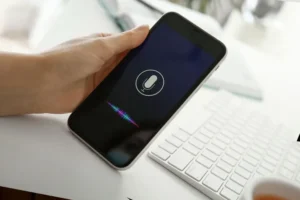
Tempered glass undergoes very high and low temperatures. This shifting of temperature is very sudden. Due to temperature changes, the outer surface of the glass compresses. The internal portion gets high tension. As a result, glass becomes durable and robust and is used in screen protectors.
Tempered glass has become very famous in many industries. Manufacturers use this glass to make screen protectors for smartphones. These tempered screen protectors provide better performance. They don’t get scratched easily. Even if the mobile phone falls, the protector saves the mobile display.
Imagine ordinary glass used as a screen protector. When the smartphone falls, this protector will do more harm than good. It will change into tiny, sharp shards and damage the smartphone’s display. Moreover, it can also pose an injury threat to the person. This is why tempered glass is used as a screen protector.
First, they are very durable and have meager chances of breaking. Second, glass breaks don’t turn into sharp particles. Instead, they produce safe, round particles that are not very sharp. So they don’t harm the user. Different types of tempered glass are used in screen protectors. Let’s dive deeper and discuss those types.
Major Types of Tempered Glass

In the section above, I provided an overview of tempered glass. However, different types of glass are used in screen protectors. Each offers unique features. Let’s discuss those types.
2D Tempered Glass
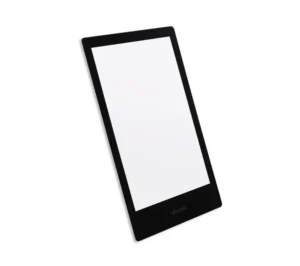
There are different types of this 2D tempered glass. Some are very curvy in shape, while others are flat and don’t have turned or bent edges. This is one of the most straightforward and affordable types. You’ll be more likely to see them on entry-level smartphones.
2D tempered glass has a very flat surface without any curves. Its edges are also very sharp. From the sides, this glass has 90-degree cuts or edges. In simple words, it does not bend or curvy from the edges. It is more common in old models, which don’t require coverage from the sides.
Have you seen some old-model smartphones? They have very sharp 90-degree edges instead of curved displays. So, these 2D tempered glass types are used on those smartphones. If you use this glass on a curvy design smartphone, it won’t serve its purpose. The reason is that it will only cover the flat top screen area. The curvy edges of the smartphone will remain exposed.
Quick Highlight: 2D tempered glass is very cheap, so protectors made of this glass are also affordable. However, they don’t offer smartphone edge-to-edge protection. This is the reason that many people don’t like this tempered glass screen protector.
2.5D Tempered Glass
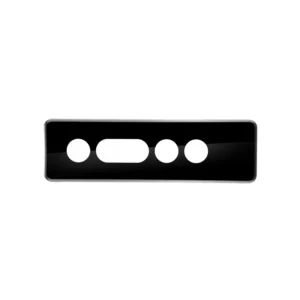
2.5D glass is more advanced than the 2D glass. Its overall looks and coverage are also better than 2D. It would be ranked between 2D and 3D glass. Many modern devices are perfectly compatible with 2.5D tempered glass screen protectors.
2.5D tempered glass has more curvy edges, so it can easily cover more area from the sides of smartphones. The edges of this tempered glass are smoothened by polish, which ensures a pleasing appearance and more rounded edges.
The edges of 2.5D glass are very aesthetically pleasing. They give smartphones a sleek look. However, if you use a very curvy smartphone, this glass won’t work. Some portions of the edges will remain exposed to dirt and dust. For example, this protector will work fine with the iPhone 6, which does not have intense curves.
This 2.5D screen protector will cover the less deep edges. However, some smartphones have deep curves, so the protector will not fully cover the edges on such phones. This tempered glass is slightly more expensive than 2D tempered glass. The reason is that it offers better coverage.
3D Tempered Glass
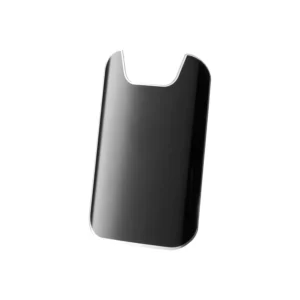
3D tempered glass is more sophisticated. It utilizes newer technology and has more curvy edges. So, it covers the complete sides and edges of the smartphone with ease. The latest smartphones come with 3D tempered screen protectors. This ensures better safety of the phone.
Many modern smartphones have curvy displays. The Samsung Galaxy S series is a good example. Its displays have intense curves. These 3D glass screen protectors can safeguard these mobiles from all sides. This glass has higher curves and bends. When used on a curvy smartphone, the bends of the glass effectively cover the sides of the smartphone.
It is the curviest tempered glass available in the market. You might hear about 5D and 9D tempered glass, but they are more robust in thickness. However, their curves are not higher than those of these 3D-tempered glass types. From iPhone to Samsung, every curvy smartphone uses 3D tempered glass.
The sellers will tell you that these 3D screen protectors are from edge-to-edge protection as a feature. So, you should not be confused. It simply means that this protection has high curves and bends. All the edges of the smartphone remain covered with tempered glass. No dust or debris will be able to affect the sides or edges of the smartphone.
Quick Highlight: 3D tempered glass is costly. Therefore, the 2.5D screen protectors are more popular. Their little curved edges offer optimal safety. Above all, these 2.5D tempered glass types are affordable compared to 3D. However, 3D glass offers ideal protection that you don’t get with 2.5D. So, it is a kind of trade-off between protection and pricing.
What are 5D, 9D, 12D Tempered Glass?
These 5D, 7D, or 9D tempered glass types are marketing tactics. The screen protector-making brand uses these terms to confuse the customers. The customer considers them better due to their higher numbering, so they buy them.
2D, 2.5D, and 3D are excellent tempered glass as they have top notch performance. Their quality increases when moving from 2D to 3D, which creates confusion. People believe the higher the number, the better the quality. This is where the manufacturer plays a game with them.
5D, 7D, or even 9D tempered glass doesn’t have any increased curves. They have a higher thickness to increase durability. When used in screen protectors, their performance is no higher than that of 3D glass. So, the question is: Are 5D, 7D, or 9D tempered glass worth it?
I would say no. You should instead spend on 2.5 or 3D glass protectors. They offer better safety. These tempered glass are thicker, and their curves are similar to those of 3D glass. But their prices are very high. So, spending more money to buy these does not make sense. Next time you buy a protector, avoid getting impressed by these terms.
Which Tempered Glass Should You Prefer?
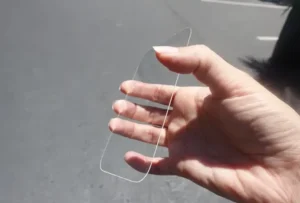
As you saw, there are many different types of tempered glass. Some of them are very beneficial in making protectors durable. However, some types, such as 5D, 7D, etc, are marketing gimmicks. In such a situation, the buyer can easily get confused by the options.
So, what type should you buy? This majorly depends on your smartphone’s design. If the phone has a gentle, curvy display, 2.5D tempered glass will work fine. However, for modern and stylish phones with curved displays, 3D glass is suitable.
2D tempered glass is only helpful for old smartphones. They usually have a very plain or plate display, with no curves or bends on the display’s surface. So, this 2D glass easily fits and covers the flat screen. However, 2.5 and 3D glass should be used when covering the ends is required.
Quick Tip: 2D glass is more affordable than 2.5D and 3D glass. This can also affect your decision-making process. 2.5D is mid-range when it comes to pricing. If it fits your smartphone, you should get it. Pricing and performance—you won’t have any complaints.
Does Tempered Glass Affect Touch Sensitivity?

No, tempered glass doesn’t affect smartphone touch sensitivity. This glass is thin and slim, ranging from 0.3mm to 0.5mm thick. So, their usage does not affect touch responsiveness. Each protector made with tempered glass is tested before it enters the market.
Remember that some tempered glass, such as 5D, 7D, etc., are thick. This could lead to issues with touch responsiveness. Remember that the thicker protectors are more likely to pose a lag in touch sensitivity. This is the reason that I don’t recommend using such glass.
The quality of the tempered glass also matters. It would be best if you bought the glass from renowned stores. Some cheap-quality fake tempered glass is available on the market. Using them in smartphone protectors would do more harm to touch sensitivity, so you should avoid such sellers.
Conclusion
Tempered glass has been a significant step forward. Its use in screen protectors has enhanced the safety of phone displays. However, different types of tempered glass are available in the market. Each has its unique pros and selling points.
Decisions could be challenging due to various types. However, this guide debunked all the misconceptions. So, when you’re going to buy a screen protector, don’t pay heed to numbers. They are just marketing gimmicks. It would be best to focus more on 2.5 or 3D glass.
